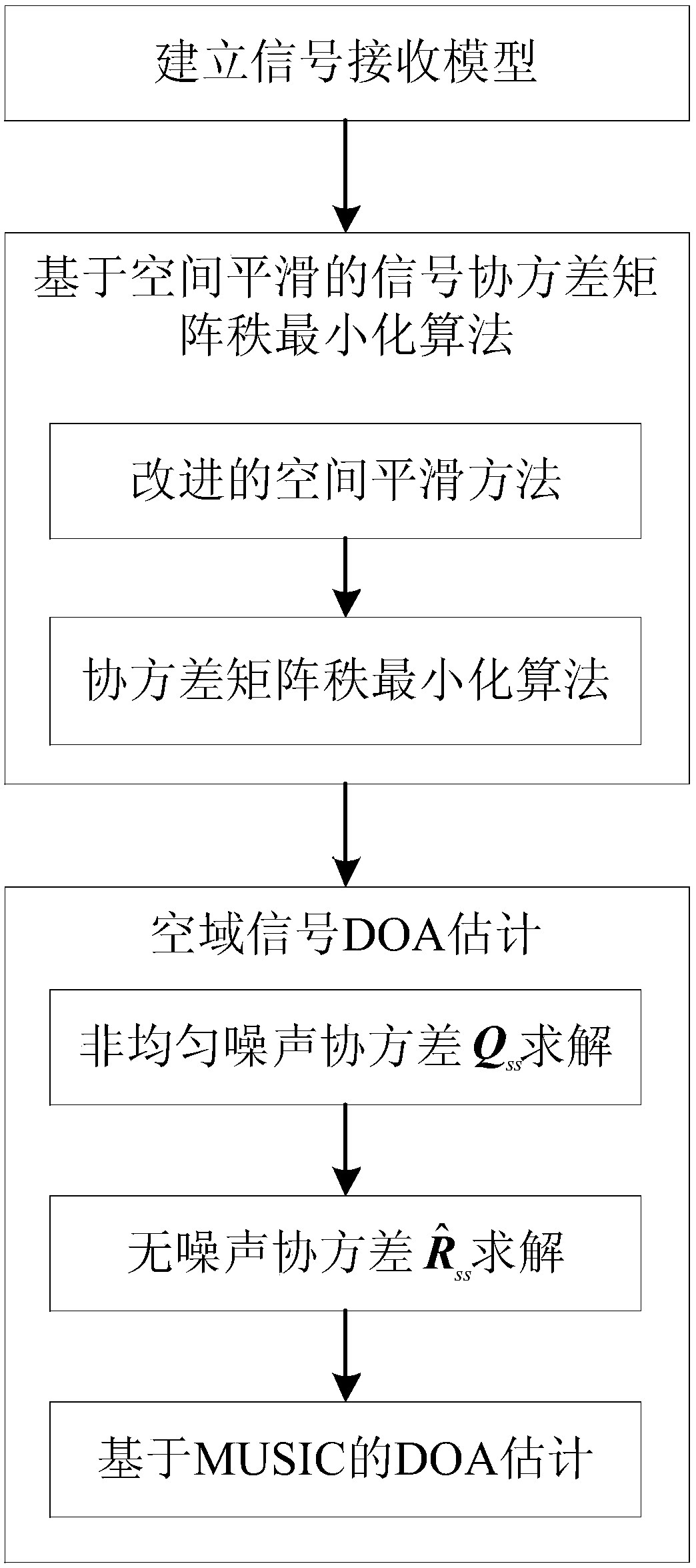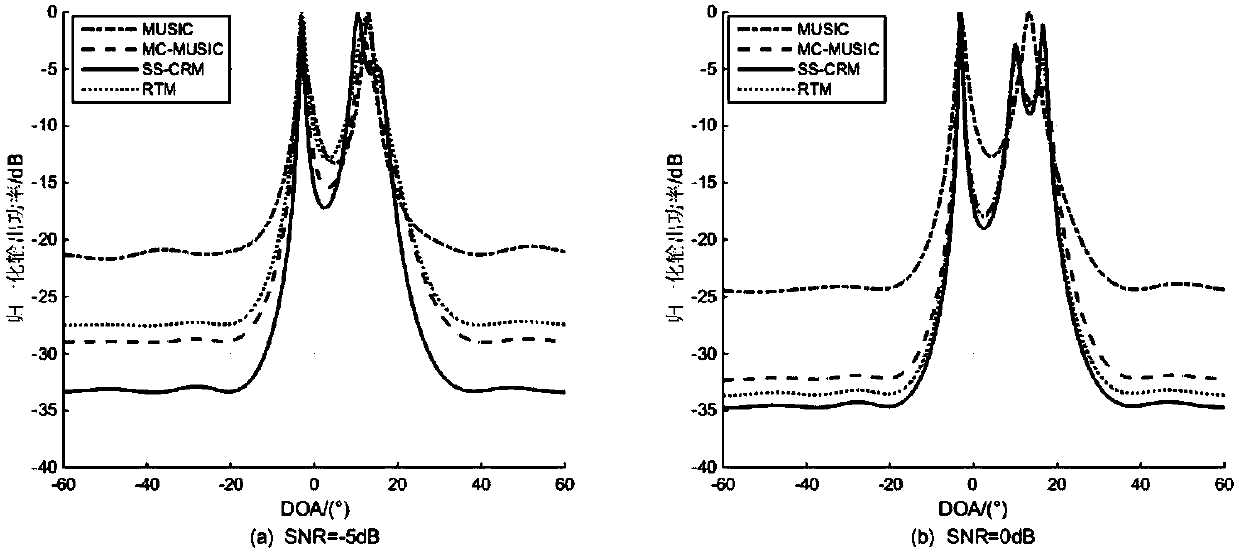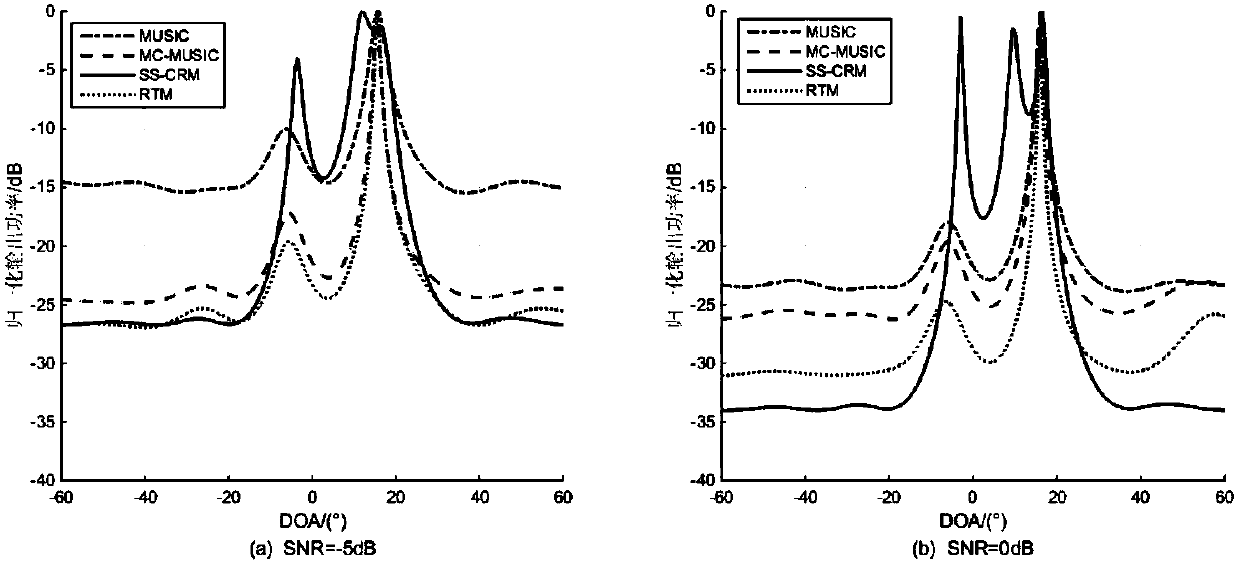Spatial smoothing-based covariance matrix rank minimization direction-of-arrival (DOA) estimation method
A covariance matrix, spatial smoothing technology, applied in the field of signal processing, can solve the problem of performance degradation of DOA estimation algorithm
- Summary
- Abstract
- Description
- Claims
- Application Information
AI Technical Summary
Problems solved by technology
Method used
Image
Examples
Embodiment Construction
[0062] The implementation steps of the present invention will be further described in detail below in conjunction with the accompanying drawings. Such as figure 1 shown.
[0063] Step 1: Build a Received Signal Model
[0064] Consider the incident angle as {θ 1 ,θ 2 ,…,θ L} L far-field narrowband signals is incident to a uniform linear array with M array elements, then the array output signal model at time t can be expressed as:
[0065]
[0066] Among them, x(t) is the received signal vector, is the array steering vector of the lth source, α=2πdsin(θ l ) / λ is the phase difference between adjacent array elements, d and λ are the array element spacing and signal wavelength respectively, usually d≤λ / 2; n(t)=[n 1 (t),n 1 (t),...,n M (t)] is uncorrelated non-uniform Gaussian noise, and n(t)~CN(0,Q), Q is the non-uniform noise covariance power matrix; narrowband signal s l (t) are not correlated with each other.
[0067] For the convenience of derivation, the recei...
PUM
 Login to View More
Login to View More Abstract
Description
Claims
Application Information
 Login to View More
Login to View More - R&D
- Intellectual Property
- Life Sciences
- Materials
- Tech Scout
- Unparalleled Data Quality
- Higher Quality Content
- 60% Fewer Hallucinations
Browse by: Latest US Patents, China's latest patents, Technical Efficacy Thesaurus, Application Domain, Technology Topic, Popular Technical Reports.
© 2025 PatSnap. All rights reserved.Legal|Privacy policy|Modern Slavery Act Transparency Statement|Sitemap|About US| Contact US: help@patsnap.com



